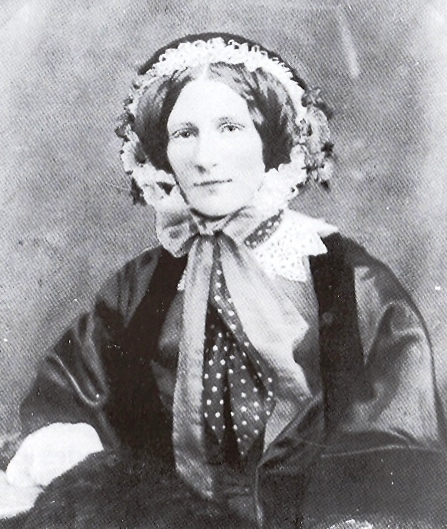by Scott Mehl
© Unofficial Royalty 2018

Elisabeth Eleonore of Brunswick-Wolfenbüttel, Duchess of Saxe-Meiningen; Credit – Wikipedia
Elisabeth Eleonore of Brunswick-Wolfenbüttel was the second wife of Bernhard I, Duke of Saxe-Meiningen. She was born in Wolfenbüttel, Duchy of Brunswick-Wolfenbüttel, now in Lower Saxony, Germany, on September 30, 1658, to Anton Ulrich, Duke of Brunswick-Wolfenbüttel and Juliane of Schleswig-Holstein-Sonderburg-Norburg. She had 12 siblings:
- August Friedrich (1657-1676) – unmarried
- Anne Sophie (1659-1742) – married Carl Gustav of Baden-Durlach, had issue
- Leopold August (1661-1662) – died in infancy
- August Wilhelm, Duke of Brunswick-Lüneburg (1662-1731) – married (1) Christine Sophie of Brunswick-Lüneburg, no issue; (2) Sophie Amalie of Holstein-Gottorp, no issue; (3) Elisabeth Sophie of Schleswig-Holstein-Sonderburg-Norburg, no issue
- August Heinrich (1663-1664) – died in infancy
- August Karl (born and died 1664) – died in infancy
- August Franz (1665-1666) – died in infancy
- Auguste Dorothea (1666-1751) – married Anton Günther II, Count of Schwarzburg-Sondershausen-Arnstadt, no issue
- Amalie Antonia (born and died 1668) – died in infancy
- Henriette Christine, Abbess of Gandersheim (1669-1753) – unmarried
- Ludwig Rudolf, Duke of Brunswick-Lüneburg (1671-1735) – married Princess Christine Luise of Oettingen-Oettingen, had issue
- Sibylle Rosalia (1672-1672) – died in infancy
On February 2, 1675, in Wolfenbüttel, Elisabeth Eleonore married Johann Georg, Duke of Mecklenburg-Mirow, the son of Adolf Friedrich I, Duke of Mecklenburg and Anna Maria of Ostfriesland. However, the marriage was short-lived as Johann Georg died just five months later, on July 9, 1675.
Bernhard I, Duke of Saxe-Meiningen; Credit – Wikipedia
On January 25, 1681, in Schöningen, Duchy of Brunswick-Wolfenbüttel, now in Lower Saxony, Germany, Elisabeth Eleonore married Bernhard I, Duke of Saxe-Meiningen, who had been widowed the previous year. Elisabeth Eleonore and Bernhard had five children:
- Elisabeth Ernestine, Abbess of Gandersheim Abbey (1681-1766) – unmarried
- Eleonore Friederike (1683-1739) – unmarried, a nun at Gandersheim Abbey
- Anton August (born and died 1684) – died in infancy
- Wilhelmine Luise (1686-1703) – married Carl, Duke of Württemberg-Bernstadt, no issue
- Anton Ulrich, Duke of Saxe-Meiningen (1687-1763) – married Charlotte Amalie of Hesse-Philippsthal, had issue
The family lived at the castle in Meiningen, Duchy of Saxe-Meiningen, now in the German state of Thuringia, while a new, much grander palace was being built. The Elisabethenburg Palace in Meiningen was completed in 1692 and named for Elisabeth Eleonore who lived there with her husband, and their children for the duration of Bernhard’s reign.
Following her husband’s death in 1706, Elisabeth Eleonore was drawn into the family battles over who would reign over the duchy. Like his father before him, Bernhard was not a proponent of primogeniture and stated in his will that his sons should rule jointly. Just as Bernhard had been against that idea when his own father died, so were his sons. Elisabeth Eleonore sided with her stepson Ernst Ludwig, who believed he was the rightful heir and should reign solely. In doing so, she sided against her own son Anton Ulrich. He had married morganatically, and Elisabeth Eleonore never accepted her daughter-in-law, or her son’s decision to marry. Ernst Ludwig won his quest to rule independently, and with Elisabeth Eleonore’s support, he developed Meiningen into a center of musical culture.
The in-fighting within the family took its toll on Elisabeth Eleonore and she retired from public life. The Dowager Duchess died in Meiningen, Duchy of Saxe-Meiningen now in Thuringia, Germany on March 15, 1729, at the age of 70. She is buried in the castle church at Elisabethenburg Palace in Meiningen.
This article is the intellectual property of Unofficial Royalty and is NOT TO BE COPIED, EDITED, OR POSTED IN ANY FORM ON ANOTHER WEBSITE under any circumstances. It is permissible to use a link that directs to Unofficial Royalty.
Saxe-Meiningen Resources at Unofficial Royalty
























